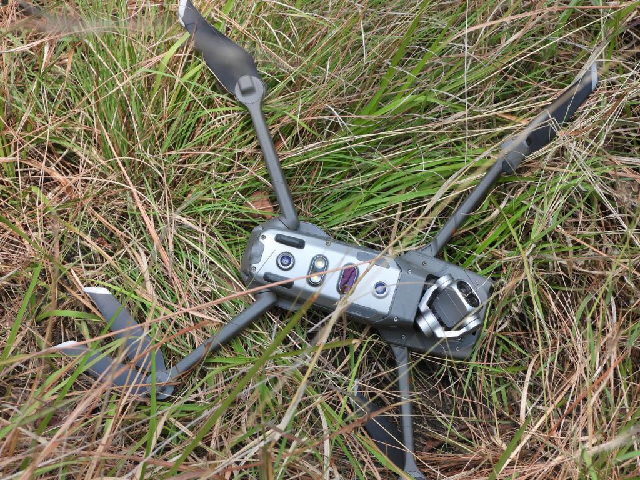Pakistan Army intercepts, destroys '8th Indian spy drone this year’
Indian spying quadcopter shot down in Khanjar Sector along Line of Control, says ISPR

Indian spying quadcopter shot down in Khanjar Sector along Line of Control. PHOTO: ISPR
"Pakistan Army troops shot down an Indian spying quadcopter in Khanjar Sector along LOC. The quadcopter had intruded 500 meters on Pakistan’s side of the LOC," the military spokesman twitted.
This is the third Indian spy drone the Pakistan forces have intercepted and destroyed near the de facto border in almost 10 days period.
"This is 8th Indian Quadcopter shot down by Pakistan Army troops this year."
#PakistanArmy troops shot down an Indian spying #quadcopter in Khanjar Sector along LOC.
— DG ISPR (@OfficialDGISPR) June 5, 2020
The quadcopter had intruded 500 meters on Pakistan’s side of the #LOC. This is 8th Indian quadcopter shot down by Pakistan Army troops this year. pic.twitter.com/2lfhIFezod
Last month, two Indian drones were brought down in the Rakhchikri Sector and Nekrun Sector of the heavily militarised zone after it intruded into the Pakistani territory, according to the ISPR.
'Let's not play with fire', Pakistan Army tells India
Indian ceasefire violations along LoC have witnessed a surge since the abrogation of constitutional status of Indian Occupied Jammu and Kashmir (IOJ&K) in August last year.
On Wednesday, Major General Iftikhar had warned that India was planning a false flag operation against Pakistan and the results of any misadventure would be “beyond anyone’s control” and would be responded with full force.
He had also said that the situation along LoC is worrisome and India has violated the ceasefire agreement many times during recent times. “This year 1,229 ceasefire violations took place and seven civilians were martyred.”
The Pakistan Army brought down many Indian quadcopters, he had said, adding that any Indian aggression will be responded in a befitting manner.



















COMMENTS
Comments are moderated and generally will be posted if they are on-topic and not abusive.
For more information, please see our Comments FAQ